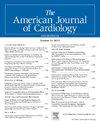难以捉摸的障碍:诊断主动脉下膜的挑战。
IF 2.1
3区 医学
Q2 CARDIAC & CARDIOVASCULAR SYSTEMS
引用次数: 0
摘要
瓣下主动脉瓣狭窄(SAS)是一种相对少见的左心室流出道(LVOT)梗阻的病因,仅占病例的8-20%。在病因中,主动脉下膜(SAoM)是最常见的,表现为各种解剖形式,包括薄的离散膜,纤维肌肉脊和弥漫性隧道样狭窄。虽然经胸超声心动图(TTE)是主要的诊断工具,但它往往存在挑战,特别是在膜不容易看到的情况下,需要进一步的经食管超声心动图(TEE)或心脏磁共振成像(CMR)成像。本病例系列探讨了两个诊断上具有挑战性的SAoM病例,强调了多模态成像的重要性以及解释这些发现的细微差别。第一例是一名19岁女性先天性主动脉瓣狭窄和ESRD,表现为呼吸困难加重;最初的TTE, TEE和CMR未能识别主动脉下膜,但术中3D TEE显示椭圆形膜,将处理从球囊血管成形术转向手术切除。第二例患者为62岁女性,既往诊断为肥厚性阻塞性心肌病(HOCM)和进行性呼吸困难,TEE检查发现SAoM与其既往诊断相矛盾;调整了药物治疗,她被转介做手术。这些病例强调了SAoM的诊断挑战,通常在最初的TTE和CMR中无法检测到,因此需要3D TEE等先进技术。如HOCM所见的误诊,可导致多年的不当治疗。总之,通过专家解释多模态成像,特别是TEE,准确和早期鉴别对于指导适当的管理和避免不必要的干预至关重要。本文章由计算机程序翻译,如有差异,请以英文原文为准。
Elusive Barriers: The Challenges of Diagnosing Subaortic Membranes
Subvalvular aortic stenosis (SAS) is a relatively uncommon cause of left ventricular outflow tract (LVOT) obstruction, constituting only 8-20% of cases. Among the etiologies, subaortic membranes (SAoM) are the most prevalent, manifesting in various anatomical forms, including thin discrete membranes, fibromuscular ridges, and diffuse tunnel-like narrowings. While transthoracic echocardiography (TTE) is the primary diagnostic tool, it often presents challenges, particularly in cases where the membrane is not readily visible, and needs further imaging with transesophageal echocardiogram (TEE) or cardiac magnetic resonance imaging (CMR). This case series explores 2 diagnostically challenging instances of SAoM, highlighting the importance of multimodal imaging and the nuances of interpreting these findings. The first case is of a 19-year-old female with congenital aortic stenosis and ESRD presented with worsening dyspnea; initial TTE, TEE, and CMR failed to identify a subaortic membrane, but intra-procedural 3D TEE revealed an oval-shaped membrane, redirecting management from balloon angioplasty to surgical excision. The second is of a 62-year-old female with prior diagnosis of hypertrophic obstructive cardiomyopathy (HOCM) and progressive dyspnea was found on TEE to have a SAoM, contradicting her prior diagnosis; medical therapy was adjusted, and she was referred for surgery. These cases underscore the diagnostic challenges of SAoM, often evading detection on initial TTE and CMR, necessitating advanced techniques like 3D TEE. Misdiagnosis, as seen with HOCM, can lead to years of inappropriate treatment. In conclusion, accurate and early differentiation through expert interpretation of multimodal imaging, particularly TEE, is crucial for guiding proper management and avoiding unnecessary interventions.
求助全文
通过发布文献求助,成功后即可免费获取论文全文。
去求助
来源期刊

American Journal of Cardiology
医学-心血管系统
CiteScore
4.00
自引率
3.60%
发文量
698
审稿时长
33 days
期刊介绍:
Published 24 times a year, The American Journal of Cardiology® is an independent journal designed for cardiovascular disease specialists and internists with a subspecialty in cardiology throughout the world. AJC is an independent, scientific, peer-reviewed journal of original articles that focus on the practical, clinical approach to the diagnosis and treatment of cardiovascular disease. AJC has one of the fastest acceptance to publication times in Cardiology. Features report on systemic hypertension, methodology, drugs, pacing, arrhythmia, preventive cardiology, congestive heart failure, valvular heart disease, congenital heart disease, and cardiomyopathy. Also included are editorials, readers'' comments, and symposia.
 求助内容:
求助内容: 应助结果提醒方式:
应助结果提醒方式:


